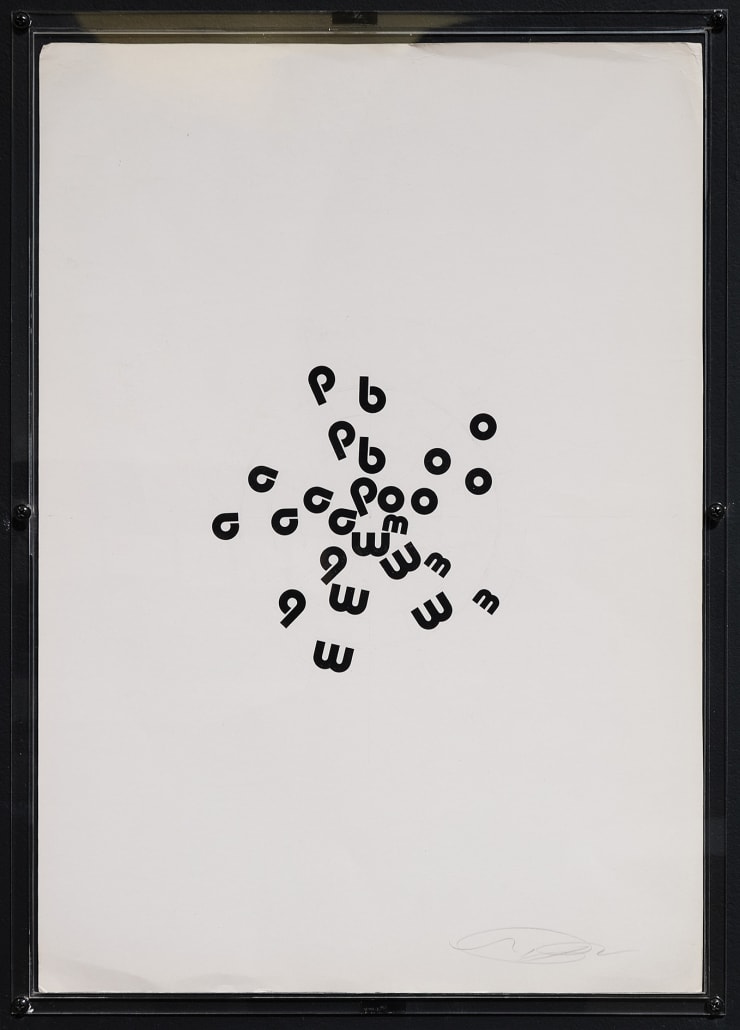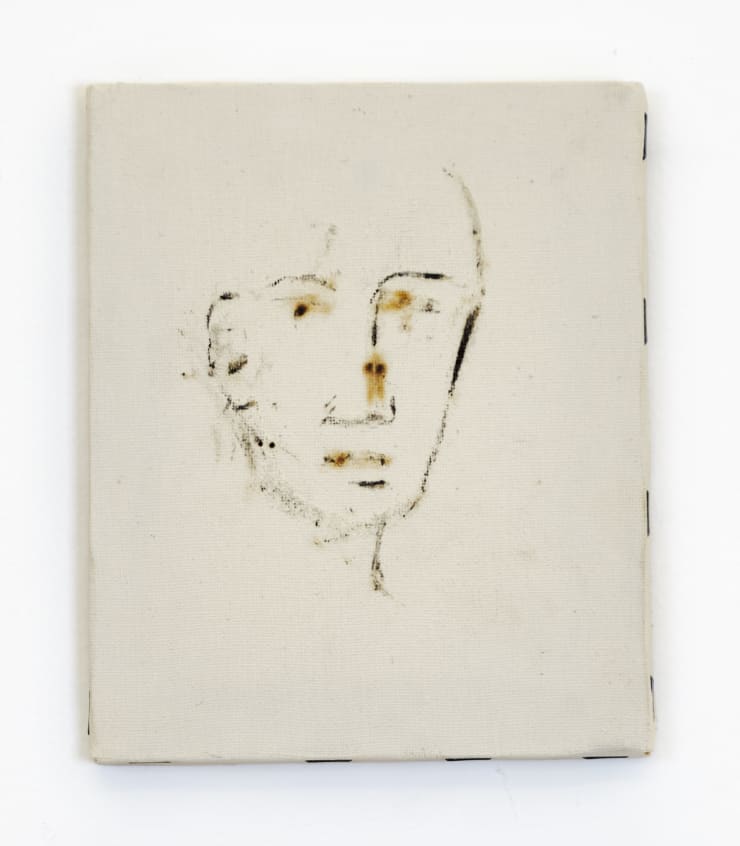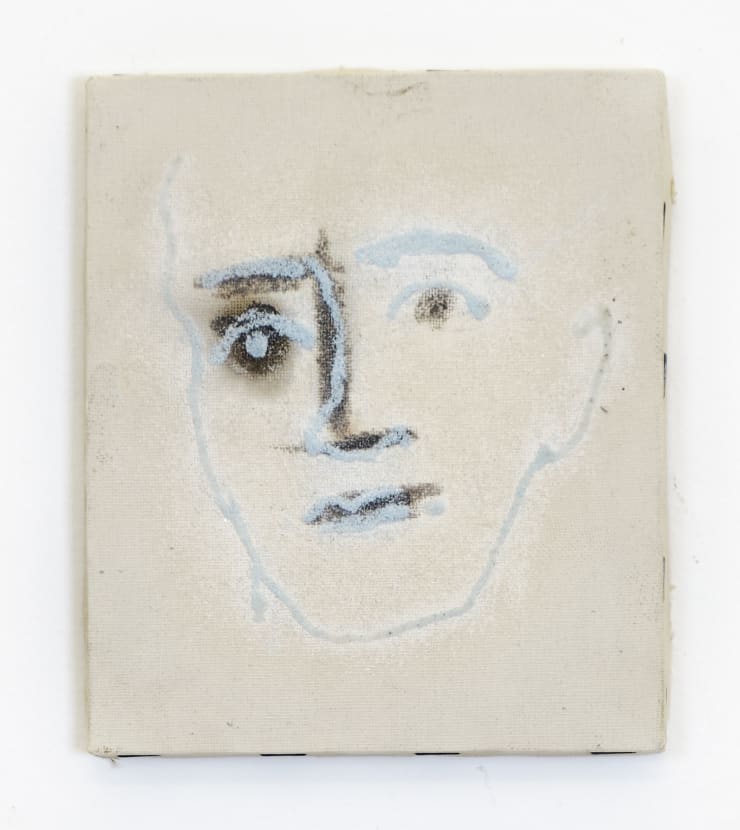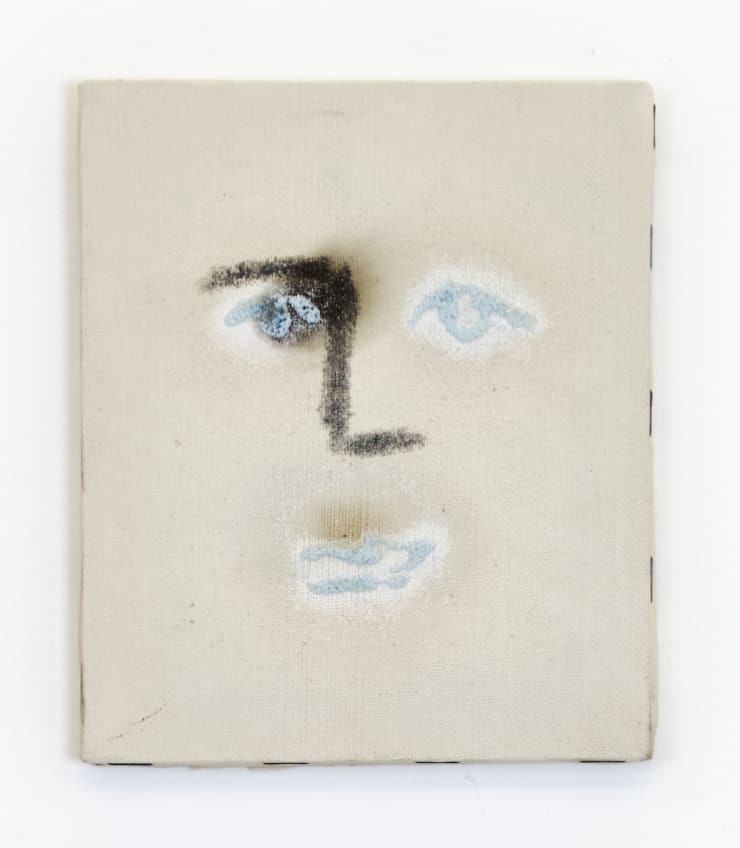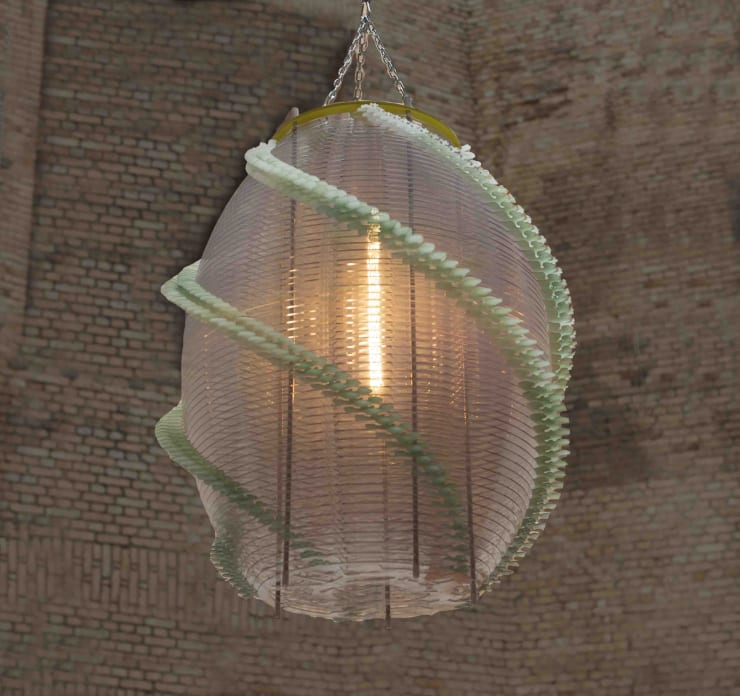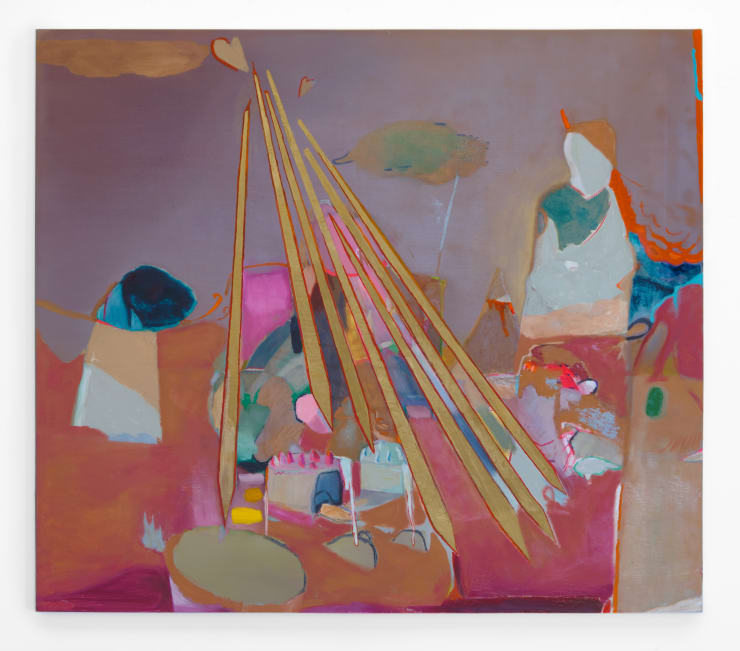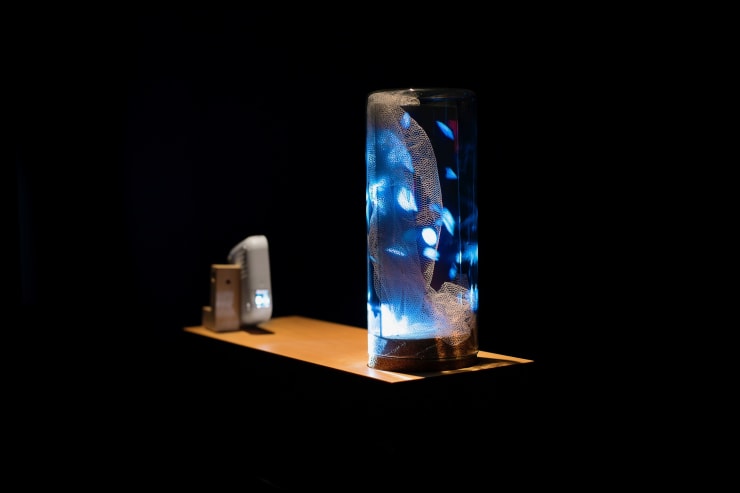-
The artistic practice involves all the steps inherent to the creative process, and, although each artist is unique, their processes all reveal the same common aim: to communicate. Understanding the importance of processes in artistic manifestations, Luciana Brito Galeria is presenting a group of works that reflects the diversity and individuality of each artist in his or her exercise of experimentation, with works by Geraldo de Barros, Regina Silveira, Caio Reisewitz, Rochelle Costi, Fernando Zarif, Jorge Pardo, Rafael Carneiro, Iván Navarro and Bosco Sodi.
Regina Silveira's Dilatáveis emerged with her academic research in the 1980s, through engraving and the appropriation of images, based on the study of the representation of shadows projected in exaggerated and distorted ways.
Bosco Sodi's Sun Paintings series was produced during the time of social isolation at Casa Wabi, on the Mexican coast, where the artist employed the rough surface of burlap sacks to paint “sun” circles in appreciation of the local sunset. Rafael Carneiro's paintings, on the other hand, present an organic and free method, based on images from his own collection, which are decontextualized, articulated and resignified. Fernando Zarif, in this series of small portraits, revealed his frenetic form of production, where creating was associated to a symbiotic experience with the processes.
In his last artistic foray, Geraldo de Barros created the Sobras series through cuts, collages and interpositions made on the basis of his own personal photograph collection, creating and recreating narratives of a lifetime. Likewise, Rochelle Costi uses images and imagery from her surroundings to delineate fields of interest in her photographs, while Caio Reisewitz resignifies the image through a technique of diluting shapes, colors and textures. -
Regina Silveira
1939, Porto Alegre. Lives and works in São Paulo, Brazil.Regina Silveira’s artistic research questions the orthodox, preestablished forms of representation, leading her to work with new possibilities of signification. Her works explore the architectural and contextual space, generally evoking a sense of uncanniness through the displacement of the commonplace, that is, our common references. Regina Silveira is known for her research into the principles of perspective, tridimensionality, and the study of shadows, which she employs in large site-specific installations, vinyl cutouts, luminous projections, works in printmaking, embroidery, porcelain, digital videos, etc.
-
BOSCO SODI
1970, Cidade do México, México. Lives and works between New York, USA, and Mexico CityBosco Sodi’s research is outstanding for its simplicity of materials from a natural origin, such as pigments, sawdust, fibers, wood, soil, etc. The combination of these elements with the gesturality of his production makes each work unique, while creating a special connection between the artist and his process of creation, which transcends the conceptual. Currently, he has been making increasing use of techniques from olden times, which not only establish a direct relationship with the ethnobotanical discourse, but also recover his native Latin American ancestrality. Bosco Sodi also associates these techniques to traditional and contemporary processes, dialoguing with the movements of land art and informalism.
-
-
Augusto de Campos
1931, São Paulo, Brasil. Lives and works in São Paulo, Brazil.Augusto de Campos is one of the key figures of concrete poetry in Brazil, as well as an essayist, translator and literary and musical critic. His artistic creation is pervaded by experimentation with language, through the idea of unity among the various communicational resources, such as words, sound and image. His visual poems and poem-objects marked the 1960s and 1970s, definitively positioning him in the artistic vanguard in Brazil. From 1990 onward, he intensified his experiments with the new media, presenting his poems in different communication channels, such as electronic billboards, video text, neon signs, holograms, lasers, computer graphics, and in multimedia events, with which he has worked until today.
-
-
Caio Reisewitz
1967, São Paulo. Lives and works in São Paulo, Brazil.Caio Reisewitz’s research takes photography as its main medium. Through technical and thematic refinement, his work evinces an interest in human action and its social and political effects, whether in the natural space or the architectural space. While his photographic technique highlights the dramaticity among shapes, colors and textures, his artistic poetics constructs a nearly dreamlike aesthetic repertoire. These aspects establish a dichotomous dialogue between the real (that which is characteristic of the photographic record) and the chimerical (our own repertoires).
-
Fernando Zarif
1960-2010, São Paulo, Brazil.A visionary and ceaseless questioner, Fernando Zarif produced a vast oeuvre, in which he established an authentic language independent from the cultural precepts of his time and associated with vanguard expressions such as performance art and video installations. Fernando Zarif is considered one of the most emblematic figures of the generation of artists from the city of São Paulo in the 1980s. From the 1990s onward, the artist began to appropriate various objects in his research, sometimes maintaining the integrity of their materials, sometimes not, but always resignifying them. Besides sculpture, video and performance, the artist explored other artistic supports, such as writing, drawing, painting and music.
-
-
-
Geraldo de Barros
1923, Chavantes, SP – 1998, São Paulo, Brazil.Geraldo de Barros is a key name of 20th-century Brazilian art. Combining his first studies on painting with a later interest in photography, he pushed the envelope of the traditional photographic processes, questioning the classic rules of composition. Geraldo de Barros took a formal concern – as clearly seen in Brazilian concretism, in which participated intensely – and managed to merge this with his social concerns, leading him to approach the industrial processes in his work, dealing coherently with geometric constructions, reproducibility, the socialization of art, the theory of form and industrial design.
-
IVAN NAVARRO
1972, Santiago, Chile. Lives and works in New York, USA.The appeal of Iván Navarro’s works springs from a combination of elements that question our perception. On the one hand, from a formalist point of view, his works are carefully constructed, having light as their main support. Light that arouses feelings, at the same time that it sparks enchantment in the spectator. Iván Navarro’s production is also imbued with political connotations, communicated to the public through countless strategies, as seen in the titles of his works, in his careful use of color, in the use of anagrams, or in the appropriation and deconstruction of symbols that represent ideologies and institutionalized power.
-
-
JORGE PARDO
1963, Havana, Cuba. Lives and works between Mérida, México, and New York, USA.Jorge Pardo’s investigation deals with the concept of functionality, questioning the limits of art, of design, and of the spaces of coexistence. His research is developed in a constructive narrative wherein various techniques are juxtaposed to build a pictorial set of references drawn not only from contemporaneity, but also from the history of art. The artist generally uses technology – he was one of the first artists to use computer programs for making his sculptures – and vibrant colors to enhance the eclectic and diversified motifs used in his paintings, sculptures and installations.
-
-
Rafael Carneiro
1985, São Paulo, Brasil. Lives and works in São Paulo, Brazil.Technical rigor is one of the main characteristics of the work of Rafael Carneiro, who over the years has been transforming within painting. The transcription of images to the canvas has become, in and of itself, the main thematics of his work, which seeks to avoid the formal commitments and labels proper to painting in order to approach the complex world of the images of culture and the collective imaginary. The meaning of the figures used by the artist is diluted by the technique he uses, which decontextualizes, reconfigures and resignifies, through the breaking of their integrality, subtracting and adding new elements, in order to compose more complex narratives. To this end, Rafael Carneiro uses a vast private collection of images, which he freely articulates with various forms of composition, through an organic creative process that often includes music.
-
EDER SANTOS
1960, Belo Horizonte, Brasil. Lives and works in Belo Horizonte, Brazil.Eder Santos’s research concerns the hybridism inherent to the audiovisual language. His videos provide true sensorial experiences by coupling views of paintings together with a soundtrack, combining distortions of colors and sounds. Exploring themes proper to everyday life in the state of Minas Gerais, Eder Santos’s investigation evinces an understanding of the important role played by the representativity of the technological media in contemporary culture, and their potentials for use as universal communication tools.
-
-
Rochelle Costi
1961, Caxias do Sul, RS. Lives and works in São Paulo, Brazil.Rochelle Costi works with affective memory – that which normally stirs up the dust in our unconscious, activated by a device: the image. Her research is based on her own image repertoire, to then be formalized through refined photographic technique, videos and installations. Collecting and photography not only complement one another, but are also merged in her work, bringing the spectator to an intimate confrontation with this universe, which becomes shared by everyone.
-
PABLO LOBATO
1976, Bom Despacho, MG. Lives and works in Belo Horizonte, Brazil.Pablo Lobato’s research is not restricted to a single artistic language or medium, but rather operates collaboratively with each material, situation or context. The articulation of his works is therefore more concerned with sensorial awakening than with any sort of controlling rule. His training in the arts, cinema and photography positions him in a hybrid place of experiencing the potentials of the action of “making visible”, fostering a sensible dialogue between aspects of painting, drawing, sculpture, photography and cinema.
-
Gertrudes Altschul
1904, Alemanha - 1962, São Paulo, BrazilGertrude Altschul was born in Germany in 1904 and, like many Jews in the 1930s, is forced to leave the country, threatened by the rise of Nazism. Thus, in 1939, together with her husband Leon Altschul, she left for exile in Brazil and settled in the city of São Paulo, at the end of the same year. Two years later, the family nucleus is recomposed with the arrival of the couple's only child, Ernest. In São Paulo, Gertrudes Altschul became a member of the Foto Cine Clube Bandeirante (FCCB) in 1952, as the only female member of Escola Paulista. Gertrudes Altschul continues her photographic production along the same path started by the pioneers (José Yalenti, Thomas Farkas, Geraldo de Barros and German Lorca), that is, the construction of a modern aesthetic in Brazilian photography within the FCCB, based on research carried out by them about the Bauhaus school, whose theories arrived in Brazil after the war.
SP-Arte 2021: Oxalá | English
Past viewing_room





